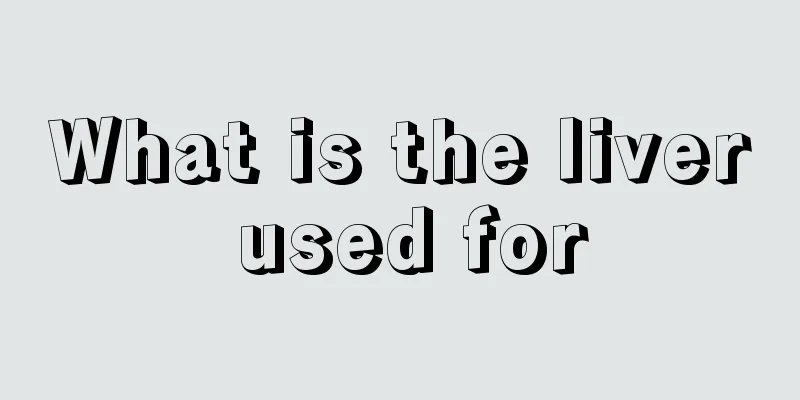What is the liver used for

|
What is the liver used for? The liver is one of the most important organs in the human body. It has many functions. It can participate in the metabolism of fat and promote the secretion of bile. The liver is also the largest digestive organ in the human body. If there is a problem with the liver, it will cause great harm to human health. There is a Chinese idiom called "肝胆相照", whether there is a problem with the liver or the gallbladder, they will affect each other. What is the liver used for? 1. The function of the liver: bile secretion Liver cells can continuously produce bile acids and secrete bile, which can promote the digestion and absorption of fat in the small intestine during the digestion process. Every day, 600-1100 ml of bile is transported to the gallbladder through the bile duct. The gallbladder concentrates and discharges bile. Bile also has the function of excreting hormones and harmful substances. 2. The role of the liver in fat metabolism The liver is a hub for fat transport. After digestion and absorption, part of the fat enters the liver and is later converted into body fat and stored. When you are hungry, stored body fat can be transported to the liver and then broken down. In the liver, neutral fat can be hydrolyzed into glycerol and fatty acids. This reaction can be accelerated by hepatic lipase. Glycerol can be utilized through the sugar metabolism pathway, while fatty acids can be completely oxidized into carbon dioxide and water. The liver is also one of the main organs for the synthesis of fatty acids, cholesterol, and phospholipids in the body, and excess cholesterol is excreted with bile. The various components of blood lipids in the human body are relatively constant. The ratio is regulated by liver cells. When fat metabolism is disordered, fat can accumulate in the liver and form fatty liver. 3. The role of the liver in sugar metabolism The main ingredient in the staple foods we eat every day is sugar. After being digested by the gastrointestinal tract, it turns into glucose and is absorbed by the intestines. Then it enters the liver through the portal vein. The liver then synthesizes it into glycogen and stores it in the liver. When the body's life activities require it, liver cells can break down glycogen into glucose to provide the energy needed by the body. Once the blood sugar concentration changes, the liver will play a regulatory role. 4. The role of the liver in vitamin metabolism In addition to relying on carbohydrates, proteins and fats to provide energy for life activities, human life is also inseparable from vitamins. For example, the synthesis and storage of vitamin A, vitamin B, vitamin C, vitamin D and vitamin K are closely related to the liver. Abnormal vitamin metabolism occurs when the liver is significantly damaged. Regular intake of B vitamins and vitamin C by patients with hepatitis or other liver diseases is beneficial to the recovery of liver disease. If secondary vitamin A deficiency occurs, night blindness or dry skin syndrome may occur. |
<<: The efficacy of red bean, coix seed and poria
>>: What medicine is used to regulate the liver, kidney and spleen
Recommend
What medicine is good for lung cancer? You can try these medicines
In order to have a better quality of life, lung c...
What should be paid attention to in nursing after ovarian tumor removal
Ovarian tumor is a disease that affects the healt...
Early symptoms and manifestations of colorectal cancer
Early symptoms of bowel cancer include blood in t...
What are the functions and effects of chickpeas and how to eat them?
Chickpeas have many uses in life. For example, th...
Is the golden-headed centipede poisonous?
I believe everyone is familiar with animals like ...
Why does sweat smell bad?
In the hot summer, people often sweat profusely. ...
What are the causes of skin pain
Skin pain is caused by a variety of skin diseases...
How to clean silver earrings
Many girls like to wear some beautiful earrings. ...
Does lung cancer with effusion mean it is in the late stage?
Lung cancer with effusion may not be in the late ...
What are the treatments for lip scabs
If your lips are prone to scabs, you should pay a...
What is the function of the right temporal lobe?
There are many diseases in the right temporal lob...
Symptoms of milk protein allergy, be careful if these occur!
Symptoms of milk protein allergy often occur in d...
Which muscles can be trained every day
Most of the body's strength comes from muscle...
How to treat cysts and which method is most suitable?
Cyst is the most common type of tumor disease. If...
What are the symptoms of gastrointestinal disorders?
Gastrointestinal dysfunction will affect our diet...









